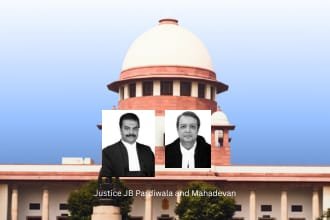In a significant ruling that reinforces the mandatory nature of limitation laws, the Supreme Court of India has held that a civil suit can be dismissed as time-barred even if no specific issue regarding limitation was framed during the trial. The judgment, delivered on April 11, 2025, in the case of R. Nagaraj (Dead) Through LRs. and Another v. Rajmani and Others [2025 LiveLaw (SC) 416], reiterates the primacy of Section 3 of the Limitation Act, 1963, and clarifies that procedural lapses like non-framing of issues do not prevent courts from performing their statutory duty.
Background of the Case
The matter arose from a prolonged legal dispute that had been pending for over 25 years. The Madras High Court, while entertaining a second appeal, chose to remand the matter back to the trial court solely on the ground that a specific issue regarding limitation had not been framed at the trial stage.
This decision was challenged before the Supreme Court, which took a firm stand in favour of judicial efficiency and the sanctity of limitation laws.
Supreme Court’s Observations
A Division Bench comprising Justices JB Pardiwala and R Mahadevan allowed the appeal against the Madras High Court’s remand order. The Court held that the trial court and the first appellate court did not commit any error in dismissing the suit on the grounds of limitation, even in the absence of a framed issue specifically addressing it.
The bench observed:
“The object of the Limitation Act, 1963 is not to destroy a vested right but to prevent indefinite litigation by prescribing a time limit for initiating legal action. Section 3 makes it mandatory for courts to dismiss any suit, appeal, or application that is filed beyond the prescribed period of limitation, irrespective of whether limitation was raised as a defense.”
Key Legal Takeaways from the Judgment
- Section 3 of the Limitation Act is Mandatory:
The Court reiterated that under Section 3, it is the statutory duty of every court to examine whether a suit or application is within the limitation period. This duty exists *even if the defendant does not plead limitation, and *even if the trial court fails to frame a specific issue. - Framing of Issues Is Not a Precondition for Limitation Ruling:
While the framing of issues helps identify disputed questions of fact and law, it is not indispensable in cases where the question of limitation is clearly discernible from the pleadings and evidence already on record. The absence of a specific issue does not affect the court’s power to decide on limitation if the point is central to the adjudication. - Substantive Justice Over Procedural Irregularities:
The Court emphasized that procedural laws like the CPC and Limitation Act are designed to aid justice, not obstruct it. If the overall proceedings demonstrate that the court has applied its mind to the issue—directly or indirectly—the absence of a distinct issue would not invalidate the outcome. - Duty to Discern the Truth:
Quoting the principle that “*the process of adjudication is to discern the truth,” the judgment warns against a hyper-technical approach that prioritizes form over substance. The judiciary’s role is to render substantial justice, and *procedural lapses that do not prejudice either party should not derail this function. - Courts Can Rule on Limitation Even Without Pleadings:
Interestingly, the Supreme Court clarified that courts can go into limitation or jurisdictional questions even when not specifically raised in pleadings, provided they are legal issues that can be decided without the need for additional evidence.
Implications of the Ruling
This decision serves as a strong message to both litigants and trial courts: timeliness is integral to justice delivery. Plaintiffs must ensure that they approach courts within the limitation period, while trial courts must remain vigilant in discharging their duty under Section 3 of the Limitation Act.
Moreover, the judgment discourages unnecessary remands—especially after long delays—on procedural technicalities like the absence of framed issues, if the core questions have already been examined.
Conclusion
The Supreme Court’s ruling in R. Nagaraj (Dead) Through LRs. v. Rajmani provides much-needed clarity on the interplay between procedural and substantive law. By upholding the primacy of limitation laws and discouraging procedural delays, the judgment ensures that legal proceedings remain fair, efficient, and focused on justice.
For litigants, this serves as a reminder to act diligently and initiate legal proceedings within statutory timelines. For trial courts, it reinforces the principle that substantial justice must prevail over technical formalities, especially when all material evidence is already on record.



